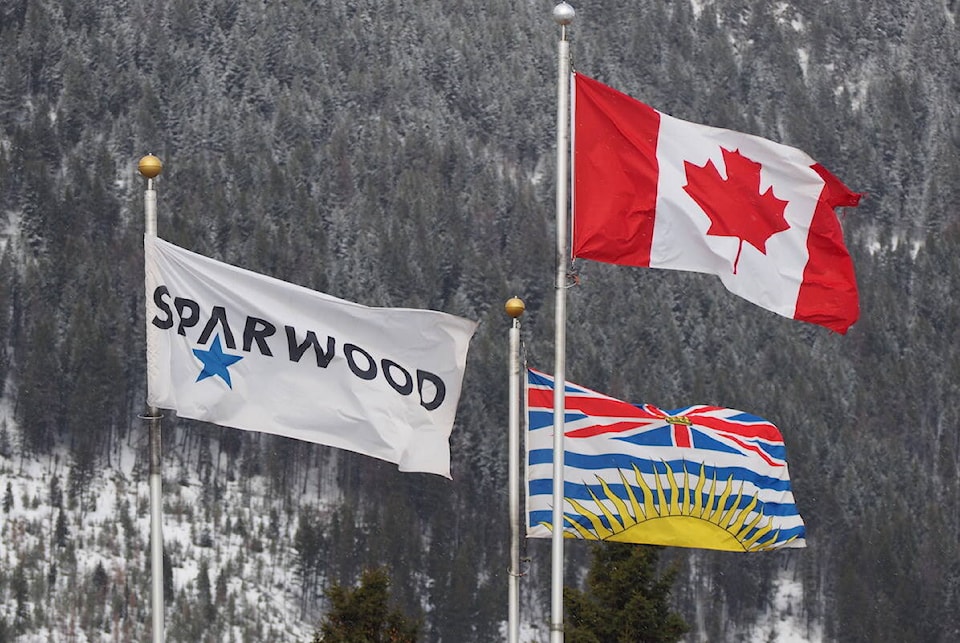Following an increase in bear encounters within the district, the Sparwood council brought together WildsafeBC, the Conservation Office and Bylaw Enforcement to discuss how to reduce conflicts in town, and what was already being done by the various agencies at work locally.
An incident involving the wounding of a mother bear with a small-calibre rifle, forcing Conservation Officers (CO) to kill her and her two yearling cubs triggered a lot of community discussion — and blame — within Sparwood.
READ MORE: Conservation officer kills black bear injured by small-calibre rifle in Sparwood
The district has seen a sharp increase in human-bear complaints over the last few months, and as of early November 14 bears have been destroyed in the district. Bylaw officers fielded four bear-related complaints in August, 12 in September and 28 in October.
At the Nov. 2 council meeting, local WildsafeBC co-ordinator Kathy Murray said human-bear conflict was on the rise everywhere, not just in Sparwood, as a result of a few seasons of good berry crops followed by a long, hot, dry summer that had left the bear population hungry and desperate.
People who don’t do their part to ensure bears don’t find the food they’re seeking in town, Murray said, are killing wildlife.
“I will say it out loud now — if you have garbage outdoors, unsecured at night, or a fruit tree loaded with crab apples or apples (or) a bird feeder … I might as well give you the gun and let you pull the trigger.”
She added that, for the most part, Sparwood had made great progress in the last few years.
“In the past we had garbage bags sitting on the curbside. Now we’ve evolved to bear-resistant containers.”
CO Patricia Burley also spoke, saying that while managing human-bear conflicts was only one part of her job, “I would say the spring, summer and fall has been consumed by black bear and grizzly bear conflicts,” she said.
“In my 14 years (as a CO), this has been the worst year for these conflicts.”
Burley said that COs have a few enforcement options available to them, such as orders with penalties for non-compliance up to $575, as well as more immediate fines for having attractants at between $235 and $345.
Currently the CO office in the area is down to two officers from three who are responsible for the Elk Valley and South Country. They have had a vacancy for a year now, which has exacerbated their workload given the Elk Valley has some of the highest numbers for human-wildlife conflict complaints, and provincially has the highest number of enforcement complaints.
Burley said the incident last month involving the mother bear and her yearling cubs being shot remained under investigation, saying the individual who shot the bear with a .22 calibre rifle had done something that was illegal, unethical and dangerous.
“If we find out who that individual is, we’ll do all we can to put him or her through court.”
Mayor David Wilks talked about what the district had been doing, and stressed that any responses were complaint-driven as that was how the system was designed.
He detailed advertising efforts, public notices, past initiatives that include every residence within the district owning a bear-resistant garbage bin, and district efforts to empty the compost collection bins every week.
Councillors discussed the need for residents to speak to their neighbours about infractions and ways to limit wildlife conflicts, especially because the entire system is complaint-based. Bylaw officers, WildsafeBC and the COs aren’t aware of sightings, encounters, enforcement issues or conflicts without the public reporting it.
During discussion, some extra steps were suggested, such as large, bear-proof community dumpsters that were available at all hours, making it easier for shift workers. Murray also talked about the tree-removal pilot program that had been successfully trialled this year in the Fernie area.
Fruit trees were a major topic of discussion, with the district’s bylaw officer, Frank deBoon saying it was a matter that hadn’t been fully addressed through education in the past locally. While Sparwood doesn’t have as many fruit trees as Fernie, Burley said that the Elk Valley “was not a great valley to have fruit trees” at all. The district will explore options on removing trees on public property.
Councillor Ron Saad asked towards the end of the meeting whether allowing residents to have chickens in their backyards within the district was a mistake or not, as prior to the discussion councillors had unanimously approved the final bylaw changes to allow hens.
Murray said that WildsafeBC had no official stance, only that chickens be kept in an environmentally friendly manner that doesn’t attract wildlife.
Burley said she couldn’t say whether it was a good or bad idea, but added that in her experience, when a homeowner has their property damaged and chickens destroyed by bears, “they decide not to have chickens anymore.”
Finally, Murray stressed that re-locating bears wasn’t the solution many appeared to believe it was.
“If you think about it, you’re taking (bears) to a different habitat. She needs to find shelter, food, there’s other dominant bears. It’s a slow, tortuous death, not a solution.
“Removing the bear, whether it’s shot or relocated, doesn’t solve the problem. It just opens up a niche for another bear.”
